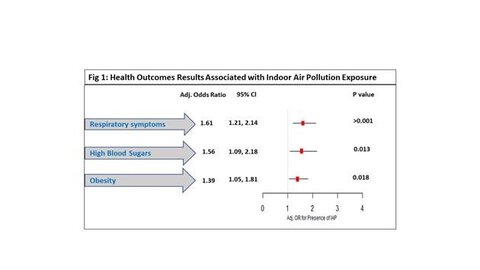Indoor Air Pollution and Its Impact on Health Conditions in Urban Slums in Western India
27 Mar 2025
Introduction: Indoor air pollution (IAP) is a critical public health issue, contributing to an estimated 6.7 million premature deaths globally each year and 0.61 million in India. Unclean fuels are considered primary contributors to IAP. However, other sources of IAP, often overlooked in research, may also significantly affect health. This study explores the health impact of sources of IAP, excluding unclean fuels, in urban slums of Pune.
Method: Through our Pollution Awareness and Wellness Assessment Initiative (PAWAN) project we conducted a questionnaire based cross sectional survey in Pune City through mobile health camps. Sources of IAP captured were burning of mosquito coils, incense sticks, dhoop, and loban at least once daily inside the house. We also checked blood pressure, height, weight, random blood glucose and hemoglobin. 1230 participants underwent spirometry.
Results: 3862 participants of which 60% were females, responded to the health-related questionnaire, and 1230 underwent spirometry. The average age was 44 +/- 15 years, and 93% resided in urban slums. 41.7% used mosquito coils, 28.7% burnt dhoop batti / loban / camphor and 70.5% burnt incense sticks at least once daily. IAP was significantly associated with increased odds of presence of respiratory symptoms by 61% (Adj. OR [CI]=1.61[1.21, 2.14] p-value<0.001), high blood sugar by 55% (Adj. OR [CI]=1.55 [1.09,2.18] p-value 0.013), and overweight or obese by 39% (Adj. OR [CI]=1.39 [1.05, 1.81] p-value 0.018) as shown in Figure 1. On Spirometry 697 (56%) out of 1230 had small airway obstruction. IAP was also significantly associated with the presence of SAO.
Conclusion: Our survey highlights that exposure to IAP, other than the use of pollutant fuels, was significantly associated with breathlessness, cough, wheezing, diabetes, obesity and small airway obstruction in the urban slums of Pune city.

Resource information
Respiratory topics
- Risk factor: indoor air pollution
Type of resource
Abstract Conference
Brasov 2025